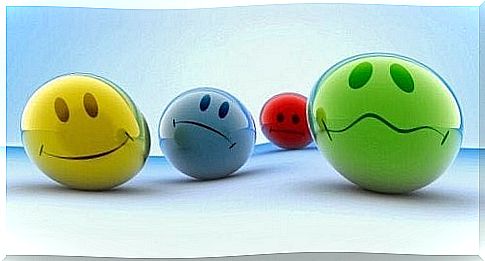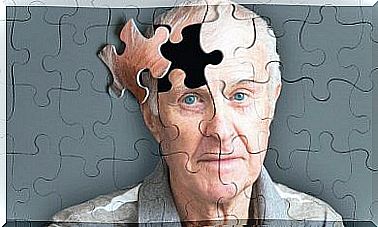Do You Know The Main Functions Of Emotions?

Johnmarshall Reeve is one of the most important authors in recent decades to the study and knowledge of motivation and emotions. More concretely, this professor considers that the main functions of emotions are as follows: adaptive, social and motivational. Let’s take a closer look at what each is and how sometimes inhibiting an emotional response can be helpful.
Pride, fear, joy, rage or shame are types of emotions that have a triple effect in people. On the one hand, they have subjective consequences that manifest in the form of feelings or emotional states. On the other hand, they have physiological effects; this term refers to the alterations that these experiences cause in our cells, tissues, organs or in our body in general. Finally, we can talk about emotions as the elements that motivate behavior.
Adaptive function
Preparing the body for action is one of the most important emotional functions. Thus, each emotion, regardless of its valence or its hedonic tone, has its own usefulness.

Thanks to the adaptive capacity with which they endow us, we can carry out actions effectively. This allows us to mobilize and use sufficient and necessary energy to move closer or further away from the goal we are pursuing. For example, the emotions of seeing someone cry next to us make us come closer to that person and take an interest in what is happening to them.
The importance of emotions as an adaptive mechanism had already been pointed out by the great Charles Darwin, who considered emotions as elements facilitating adequate behavior. More concretely, the adaptive functions of each of the primary emotions (P. Ekman) are:
| Primary emotions | Adaptive function (utility) |
| Joy | Affiliation |
| Disgust | Rejection |
| Anger | Self defense |
| Fear | Protection |
| Surprise | Exploration |
| Sadness | Reinstatement |
Social function
“I am ashamed”, “I feel happy” or “I feel apprehension”. Emotions communicate our affective states and express our mood. In addition, they facilitate social interaction and are used so that the rest of the people around us can predict our behavior, just as we can guess theirs. Therefore, their value in interpersonal relationships is unmistakable.
Emotions are sometimes difficult to express verbally. We must therefore keep in mind that expressing what we feel is not only done orally. If we want to know how a person is feeling, it is often best to just observe. The body posture we adopt or our facial expression often gives others more information than “I’m sad”.

Nevertheless, the lack of communication or the inhibition of emotions can exercise, in a certain way or in specific situations, a social function. More specifically, in those situations in which concealing and not displaying certain reactions ensures that we maintain a friendly relationship with another person. That is, when “the cure is worse than the disease”.
In general terms, emotional inhibition produces misunderstandings and an additional physiological burden. This, in addition to being preventable, can be extremely harmful. Being able to manifest your feelings and express your emotional experiences in a controlled way is very healthy and beneficial. It further strengthens the social support network.
Social contagion
The strong social contagion component of emotions may be one of the reasons positive people seem to be more attractive than negative ones. We are all genetically predisposed to let ourselves be carried away by this emotional contagion. However, some people have a greater capacity, whether it is to transmit or to capture emotions.
Motivational function
Finally, the motivational function is one of the functions of the emotions considered to be the most important. The relationship that is established between motivation and emotion is two-way because both constantly feed back into each other.
On the one hand, all motivated behavior produces an emotional reaction. And, on the other hand, emotions are the essence of motivation. They determine the appearance of this type of behavior, endow them with greater or less intensity and guide them in one direction or another.
For example, if we feel joy when having coffee with another person, we will be more motivated to see them again on another day. On the contrary, a bad experience with that same person will produce a negative feeling for us and we will think twice before contacting them again.

We now know what the main functions of emotions are. We can therefore be more aware of the physiological changes that we experience throughout the day. How many emotions can we feel in twenty-four hours? Imagine the number of cellular alterations that occur in response to these …










